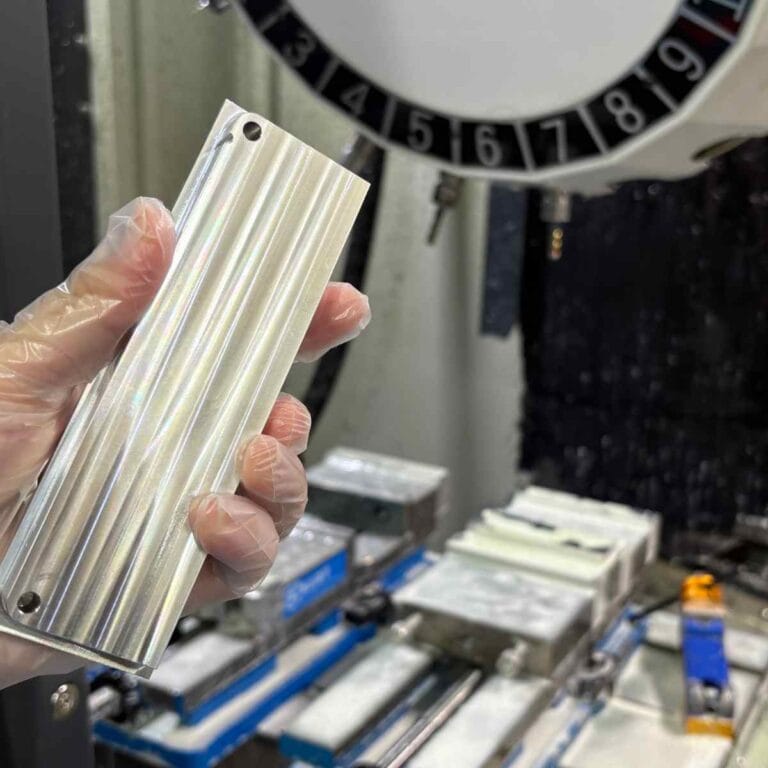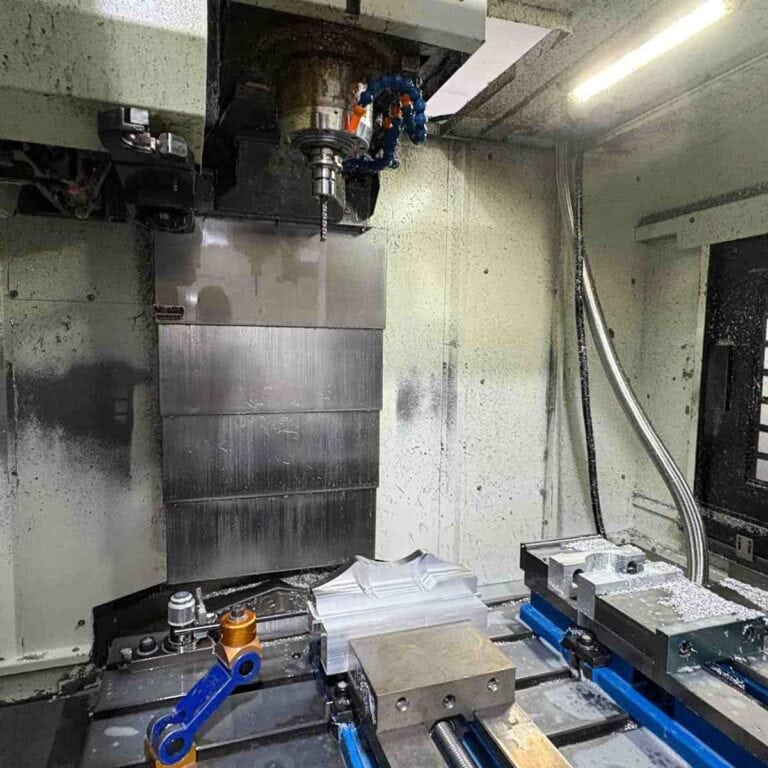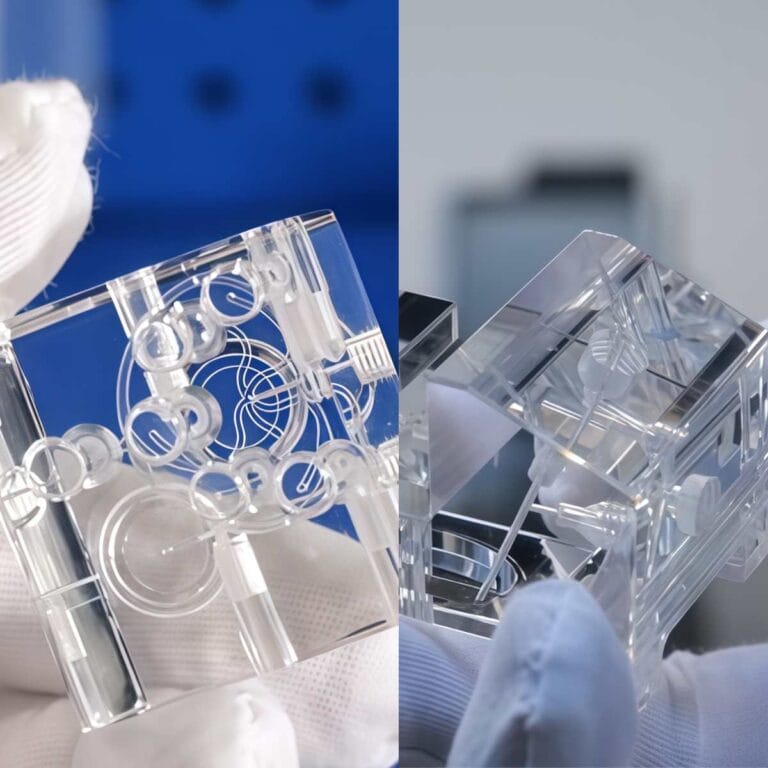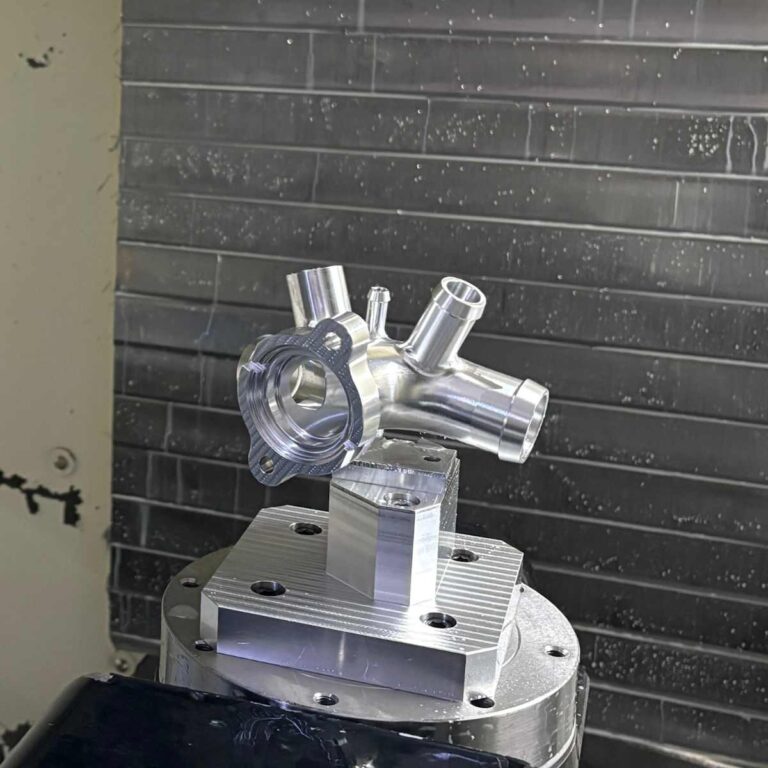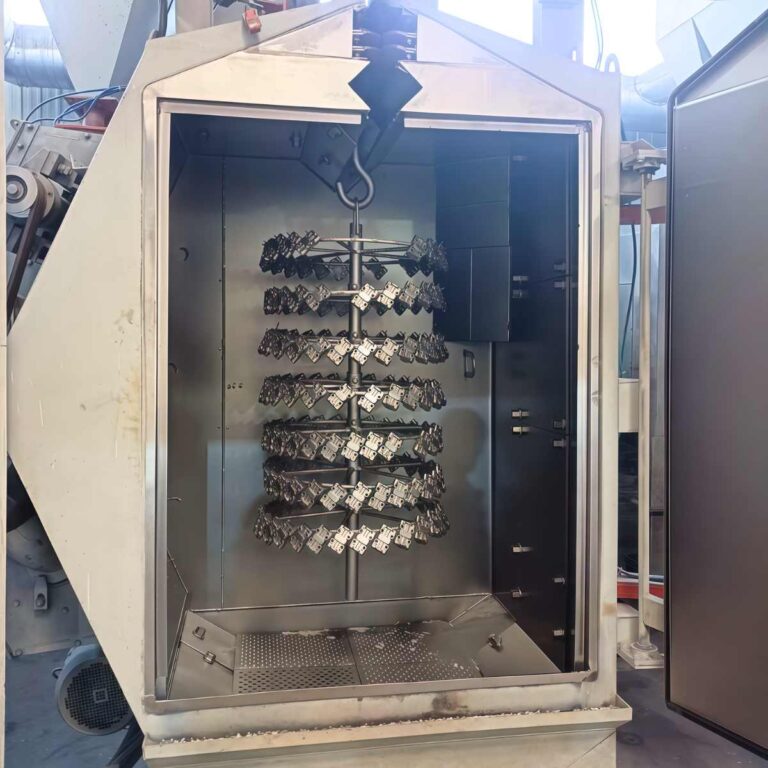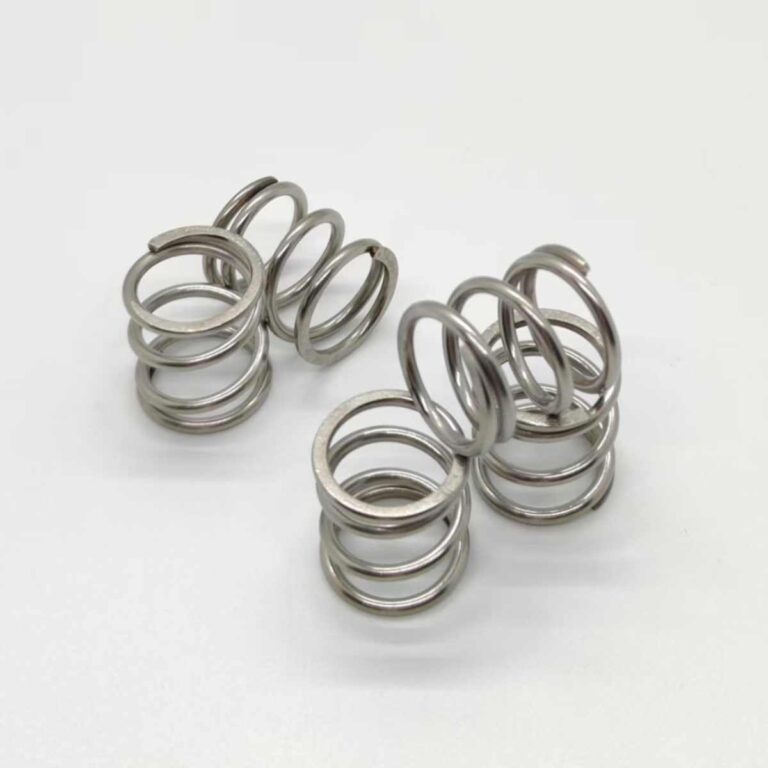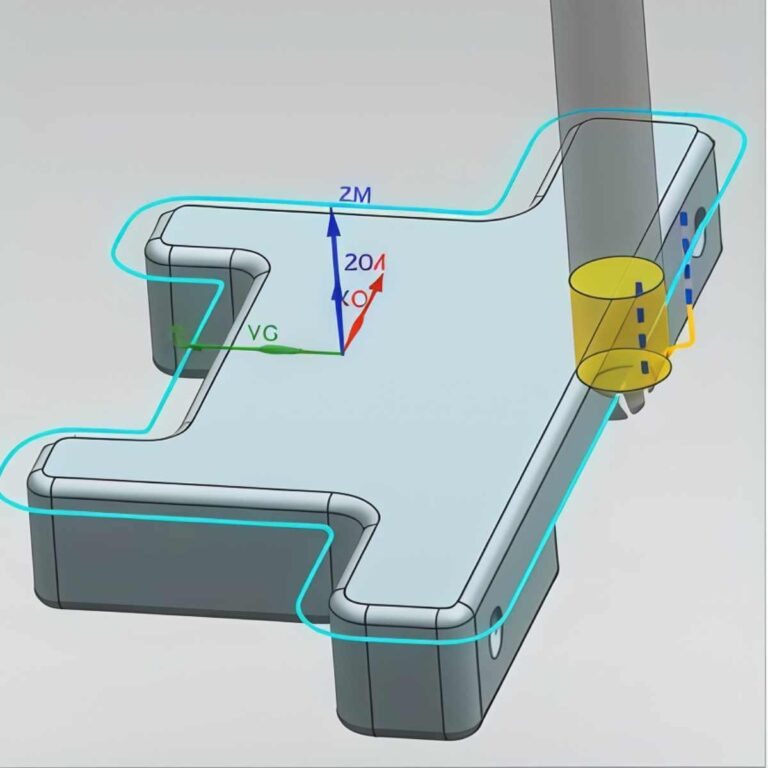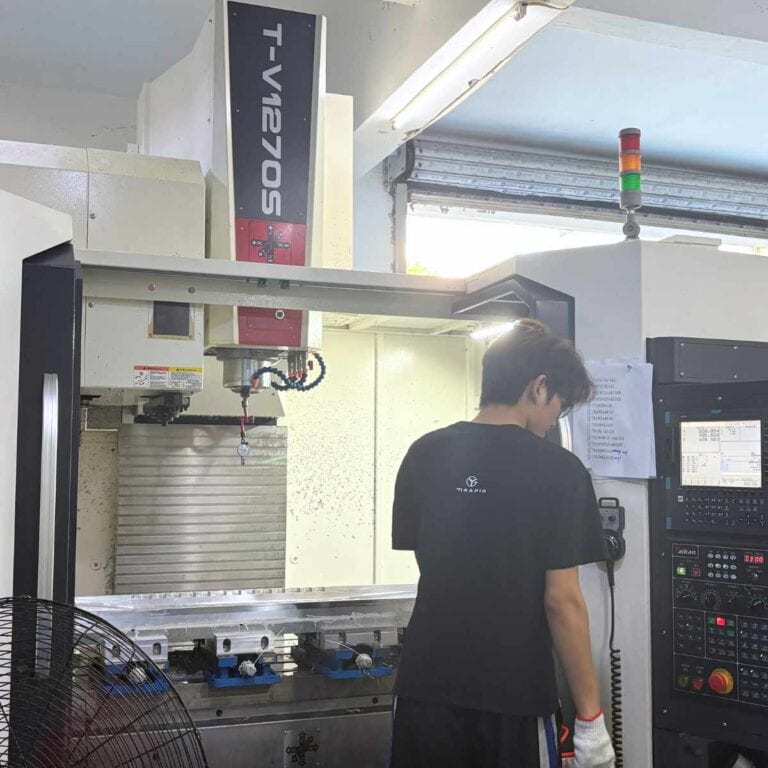Modern manufacturing relies on CNC complex parts to achieve extreme precision, tight tolerances, and intricate geometries. With advances in multi-axis CNC milling, turning, and EDM, engineers can now produce components for aerospace, medical, and robotics applications with exceptional reliability. This introduction outlines how complex designs are machined and what you should consider to ensure accuracy and cost-effective production.
What Are CNC Complex Parts
CNC complex parts are components that feature intricate geometries, tight tolerances, deep cavities, thin walls, multi-axis surfaces, or non-standard features that cannot be produced with basic machining methods. These parts often require 4-axis or 5-axis CNC machining, advanced toolpaths, and multi-step programming to achieve high precision and repeatability. Understanding what makes a part “complex” is essential for controlling machining cost, manufacturability, and production lead time.
Get 20% offf
Your First Order
Detailed Engineering Explanation
A CNC part is considered complex when its structural features exceed the capabilities of simple 3-axis machining. Complexity can arise from:
Geometry: free-form surfaces, undercuts, steep angles, contoured profiles
Tolerances: requirements tighter than ±0.02 mm
Thin Walls: walls under 1 mm that risk vibration and deformation
Deep Features: deep pockets, narrow channels, or high aspect-ratio cavities
Multiple Setups: parts requiring several orientations or coordinated rotary axes
Hybrid Features: threads, text engraving, micro-holes, or combined milling/turning requirements
In complex CNC machining, multi-axis equipment such as 4-axis and 5-axis mills, Swiss-type lathes, and EDM are commonly used. These machines allow the cutter to maintain optimal tool angles, reduce manual repositioning, and produce precise surfaces even in difficult-to-reach areas.
For example, at TiRapid we frequently machine aerospace brackets with ±0.01 mm tolerance, medical housings with multi-level internal pockets, and automotive prototypes requiring 5-axis contouring. In these cases, complexity directly impacts tool selection, CAM programming, cutting strategy, fixturing stability, and the overall cost structure.
Why Choose CNC Machining For Complex Parts
When designing CNC complex parts with multi-surface contours, tight tolerances, or deep internal features, choosing the right machining method is critical. CNC machining offers unmatched precision, material compatibility, and flexibility, making it the most reliable solution for manufacturing intricate geometries across aerospace, medical, automotive, and robotics applications.
Explanation & Engineering Analysis
CNC machining is ideal for producing complex parts because it delivers high accuracy, repeatability, and consistent surface quality. Complex components often include thin walls, organic curves, deep cavities, or tight tolerances that require advanced tool control and rigid setups. CNC systems handle these challenges by combining multi-axis movement, high-speed spindles, and automated tool changes.
For many engineering projects, the complexity of a part determines which machining platform is used—CNC lathe, 3-axis milling, 4-axis indexing, or full 5-axis machining. Engineers typically evaluate part geometry, dimensional requirements, loading conditions, and material behavior before selecting the appropriate process.
3-Axis Machining
3-axis CNC milling and turning allow movement along X, Y, and Z axes.
Advantages:
Best for simple to moderately complex parts
Cost-effective for prototypes and production
Ideal for flat surfaces, pockets, and basic features
Limitations:
Cannot reach undercuts or steep angled surfaces
Tool access is restricted for deep cavities
5-Axis Machining
5-axis machining rotates the part or tool along two additional axes, enabling access to nearly any geometry.
Advantages:
Achieves complex contours in one setup
Eliminates repositioning errors
Produces smoother surfaces and tighter tolerances
Essential for impellers, turbine blades, molds, and medical implants
Considerations:
Higher equipment cost
Requires experienced programmers and machinists
Mill-Turn (Turn-Mill) Centers
Mill-turn machines combine high-speed turning with multi-axis milling.
Benefits include:
Complete machining in one cycle
Reduced setups and improved concentricity
Ideal for complex shafts, housings, and hybrid geometries
Overall, CNC machining remains the best method for manufacturing complex parts economically and accurately, especially when intricate shapes, stability, precision, and short lead times are required.
Key Factors That Define “Complex” In CNC Machining
Understanding what makes a CNC part “complex” is essential for accurate quoting, realistic lead times, and selecting the correct machining strategy. Complexity is not defined by size alone—it results from geometry, tolerance demands, process steps, tool accessibility, and how efficiently a part can be produced. By analyzing these factors early, engineers can optimize designs, reduce machining risks, and control cost.

Dimensions And Part Size
Part size does not directly determine complexity, but it influences how challenging the machining process becomes.
Large planar parts are usually easier to machine than small intricate components.
Small parts require tighter dimensional stability because even a 0.02–0.05 mm deviation can affect functionality.
Thin-walled sections or deep pockets increase the risk of vibration, chatter, and deflection.
Engineering insight: In many TiRapid projects, components under 20 mm with multiple micro-features often required slower feed rates and special fixturing, showing how size interacts with complexity
Cutting Tool Selection
Tool size, geometry, and reach significantly impact machinability.
Larger tools remove material faster but cannot access narrow or deep features.
Long-reach tools create risk of deflection and require reduced cutting speed.
Micro tools (<1 mm) drastically increase machining time and tool-break risk.
Rule of thumb: Tool length-to-diameter ratio should stay within 3:1 for best stability.
Processing Time & Operations Required
A part becomes more complex as the number of machining operations increases.
Multiple setups, re-orientations, and manual interventions extend lead time.
Features like deep cavities, undercuts, and compound curves may require 5-axis machining or mill-turn centers.
A complex part may need roughing, semi-finish, finishing, deburring, EDM, and inspection stages.
Example: One aerospace bracket we produced required six setups and both 5-axis milling and EDM due to inaccessible inner ribs—greatly increasing complexity.
Tolerances
Tighter tolerances exponentially increase part complexity.
Standard CNC tolerances: ±0.05–0.1 mm
Precision complex parts: ±0.01–0.02 mm
Ultra-precision: ±0.005 mm or less
Tight tolerances affect:
Tool selection
Machining speed
Heat generation
Material removal strategy
Inspection requirements (CMM needed)
Higher tolerances → higher cost, more time, and more process steps.
CNC Technologies For Complex Parts
Modern CNC machining enables precise, efficient production of complex geometries that cannot be achieved through conventional methods. Choosing the right machining technology—milling, turning, EDM, or finishing—is crucial for maintaining tight tolerances, achieving smooth surfaces, and optimizing production speed for intricate part designs.
| Technology | Key Capabilities | Best Use Cases |
|---|---|---|
| CNC Milling (3-Axis / 4-Axis / 5-Axis) | Deep-cavity strategies, high-precision step-down milling, advanced toolpaths (trochoidal / adaptive clearing), multi-angle cutting for complex geometries | Multi-surface CNC Complex Partsd, aerospace brackets, medical housings, undercuts, intricate contours, precision aluminum/titanium parts |
| CNC Turning / Mill-Turn | Live-tooling for drilling/milling on the lathe, synchronized spindles, tight concentricity, complex cylindrical + prismatic geometry in a single setup | Shafts, hubs, rings, valve bodies, automotive components, multi-feature rotational CNC Complex Parts |
| Wire EDM (Electrical Discharge Machining) | Ultra-high accuracy cutting ±0.002 mm, sharp internal corners, micro-slots, burr-free edges; ideal for hardened steels | High-tolerance profiles, extrusion dies, stamping dies, injection mold inserts, micro-features in precision CNC Complex Partsd |
| Sinker EDM (Ram EDM) | Produces deep cavities and shapes unreachable by cutters, excellent for hardened metals, fine details | Thin ribs, deep pockets, mold cores, 3D internal cavities, complex tool-steel components |
| Surface Finishing | Anodizing, polishing, mirror finishing, bead blasting, electropolishing, passivation; tolerance-controlled finishing | Cosmetic surfaces, corrosion resistance, sealing faces, smooth operation surfaces, final finishing for CNC Complex Parts |
Design For Manufacturability (DFM) For Complex Parts
Designing CNC complex parts requires balancing functionality with machining efficiency. By applying smart DFM principles early, engineers can reduce cost, shorten lead time, and achieve more stable precision during manufacturing. The following guidelines help optimize part geometry, improve machinability, and avoid unnecessary complexity—ensuring your CNC complex parts are produced accurately and cost-effectively.
Optimize Internal Corners
Use fillets instead of sharp 90° internal corners to reduce tool stress and prevent cutter deflection. A radius equal to 1–1.5× the tool diameter improves toolpath efficiency and surface quality.
Standardize Hole Sizes & Threads
Select standard drill diameters, thread pitches, and depths. This minimizes tool changes, reduces machining time, and improves consistency across CNC complex parts.
Avoid Extremely Deep Features
Deep cavities and slots increase machining time and cause vibration or tool chatter. Keep depth-to-width ratios within recommended limits, or redesign the feature into multiple accessible sections.
Maintain Stable Wall Thickness
Thin walls tend to warp, vibrate, or deform during machining. Maintain uniform wall thickness wherever possible and avoid walls thinner than 0.5–1.0 mm unless required.
Reduce Non-Critical Tolerances
Apply tight tolerances only to functional surfaces. Over-tolerancing adds unnecessary machining passes and significantly increases production cost.
Minimize Unnecessary Aesthetic Features
Decorative grooves, complex surface curves, and non-functional text increases machining time. Streamline cosmetic features unless they provide functional value to the part.
Workholding Strategies For Difficult Designs
Workholding is one of the most critical factors in machining CNC complex parts. As geometries become thinner, deeper, or more curved, ensuring secure and stable clamping becomes essential for precision, surface quality, and tool life. The right workholding strategy reduces vibration, prevents deformation, improves accuracy, and enables multi-face machining with fewer setups—directly lowering production cost and lead time for complex designs.
Custom Fixtures & Soft Jaws
Custom fixtures and soft jaws are tailored to fit the complex contour or irregular geometry of the part. By maximizing surface contact and distributing clamping pressure evenly, they prevent deformation in thin walls, delicate features, or asymmetric shapes. Soft jaws can be CNC-machined to match the part profile, ensuring ultra-stable holding for tight-tolerance operations.
Multi-Face Machining
Multi-face machining uses indexed vises, rotary tables, or 5-axis setups to access several faces of a part in a single fixture. This strategy reduces the number of repositioning steps, lowering cumulative error and improving consistency. It is especially effective for complex parts with deep features, angled surfaces, or multiple operation zones.
Vacuum Fixtures
Vacuum fixtures provide uniform holding force across large or flat surfaces, making them ideal for thin plates, delicate materials, or parts that cannot be clamped with traditional jaws. They eliminate mechanical distortion and allow full-face machining without obstruction. Vacuum systems are commonly used for aerospace panels, electronic housings, and lightweight structural components.
Modular Vise Systems
Modular vise systems allow rapid reconfiguration for different part sizes and geometries. They support flexible setups with adjustable jaws, parallels, and stops—perfect for prototyping or small-batch complex parts. Their repeatable positioning improves efficiency, reduces operator error, and enhances precision for multi-operation machining.
Materials Suitable For Complex CNC Parts
Choosing the right material is critical when machining CNC complex parts, because different materials respond differently to cutting forces, heat, and tool engagement. The ideal choice must balance strength, machinability, cost, and long-term performance. Below is a clear overview of materials commonly used for difficult geometries and high-precision machining.

Aluminum (6061 / 7075)
Aluminum alloys are widely preferred for complex CNC parts due to their light weight, excellent machinability, and stable cutting behavior. Grades like 6061 provide balanced strength and cost efficiency, while 7075 offers nearly double the tensile strength, making it suitable for aerospace or high-load components. Aluminum also dissipates heat well, reducing tool wear and ensuring smoother surface finishes on intricate geometries.
Stainless Steel (304 / 316 / 17-4 PH)
Stainless steels deliver superior corrosion resistance and mechanical strength but require more aggressive cutting strategies. 304 and 316 are common for general structural and chemical-resistant applications, whereas 17-4 PH is preferred when high strength and tight tolerances are required. These materials tend to harden during machining, so optimized feeds, speeds, and rigid setups are essential for producing complex features.
Titanium (Ti-6Al-4V)
Titanium alloys offer an exceptional strength-to-weight ratio, making them ideal for aerospace, medical, and high-performance mechanical parts. However, they generate high cutting heat and cause rapid tool wear, which increases machining difficulty for deep cavities and thin-wall structures. With proper cooling, sharp tooling, and adaptive toolpaths, titanium can achieve outstanding precision and stability in demanding applications.
Copper & Brass
Copper and brass are popular for parts requiring electrical conductivity, tight sealing surfaces, or high-precision valve components. Brass machines very easily, producing clean edges and consistent tolerances ideal for threaded or micro-features. Copper is softer and more gummy, requiring sharp cutters and controlled chip evacuation, especially when machining small channels or heat-transfer components.
Engineering Plastics (PEEK, Polycarbonate, Delrin)
High-performance plastics are excellent choices for lightweight, corrosion-free, and electrically insulating complex parts. PEEK provides exceptional strength, heat resistance, and dimensional stability, even for thin-wall or micro-mechanisms. Polycarbonate offers impact strength and transparency, while Delrin delivers excellent surface finish for gears, guides, and precision movement components. Plastics require careful thermal control to avoid deformation during high-speed machining.
Surface Finishing Options for Complex Parts
Surface finishing plays a critical role in the performance, durability, and aesthetics of CNC complex parts. Because intricate geometries often include deep pockets, fine edges, and tight-tolerance features, selecting the right finishing method ensures smooth surfaces, precise functionality, and improved corrosion resistance. The following finishing options are commonly used for high-precision components across aerospace, medical, robotics, and automotive industries.
Bead Blasting
Provides a uniform matte appearance, removes tool marks, and improves surface texture without affecting dimensional tolerance significantly.
Polishing / Mirror Finish
Creates ultra-smooth surfaces for optical, medical, and decorative parts; essential for reducing friction and improving visual quality.
Electropolishing
Electro-chemical process that enhances corrosion resistance, smooths micro-burrs, and delivers superior cleanliness for stainless steel parts.
Anodizing
Ideal for aluminum components, offering wear resistance, corrosion protection, and customizable colors. Type II and Type III hard anodizing are commonly used.
Powder Coating
Adds a durable, protective layer with excellent impact and chemical resistance. Suitable for components where appearance and durability matter.
Passivation
Specifically applied to stainless steel to remove surface contaminants and enhance corrosion resistance without altering dimensions.
Inspection & Quality Control for Complex Parts
Ensuring accuracy in CNC complex parts requires a rigorous inspection workflow. Because complex geometries involve deep features, multi-axis contours, and tight tolerances, advanced metrology tools are essential to verify dimensional accuracy, surface quality, and functional fit. The following methods help maintain consistency, reduce deviation risks, and guarantee that every part meets engineering specifications.
CMM Inspection
Coordinate Measuring Machines (CMM) provide the highest precision for complex parts by capturing 3D point data with accuracy up to ±0.002 mm. Ideal for deep cavities, internal features, and multi-axis geometries.
Optical Scanning
High-resolution 3D optical scanners generate full-surface point clouds for fast comparison against CAD models. This method is excellent for free-form shapes, curved surfaces, and delicate materials.
On-Machine Probing
Integrated probing systems allow real-time dimensional checks during machining. This reduces setup errors, compensates for tool wear, and ensures accuracy before the part leaves the machine.
Surface Roughness Measurement
Profilometers and optical roughness gauges measure surface finish parameters such as Ra, Rz, and Rt. Critical for sealing surfaces, sliding interfaces, and components requiring ultra-smooth finishes.
How to Optimize Your Complex CNC Design
Optimizing a complex CNC part begins long before machining starts. Clear documentation, accurate tolerancing, and smart feature simplification can dramatically reduce machining time, cost, and risk. By providing the right information upfront and designing with manufacturing limitations in mind, engineers ensure better consistency, shorter lead times, and higher-quality parts.
• Provide Full 3D CAD + 2D Drawings
Always include a complete 3D model (STEP/IGES) along with detailed 2D drawings showing dimensions, tolerances, thread specs, and surface finish notes. This eliminates ambiguity and ensures the machinist interprets the design correctly.
• Highlight Critical Tolerances Only
Apply tight tolerances only to functional areas. Over-tolerancing increases machining time, requires slower feeds, and raises cost. Focus precision where performance depends on it.
• Provide Material + Finish Requirements
Specify exact material grades (e.g., 6061-T6, 17-4 PH, PEEK) and required surface finishes (anodizing, polishing, coating). This helps machinists choose correct tools, feeds, and cutting strategies for best results.
• Specify Datum References Clearly
Define primary, secondary, and tertiary datums to ensure correct alignment during machining and inspection. Clear datum structure improves repeatability and reduces measurement errors.
• Simplify features where possible
Remove unnecessary cosmetic details, avoid deep pockets, unify radii, and reduce the number of small or hard-to-reach features. Simpler designs machine faster, cost less, and achieve better accuracy.
Recommended Version
Optimizing CNC complex parts starts with clear CAD data, targeted tolerances, and simplified features. Provide full drawings, define datums, specify materials and finishes, and focus precision only where needed — ensuring faster machining, stable quality, and lower costs.
FAQs
What Are CNC Complex Parts?
CNC complex parts are components with multi-axis features, tight tolerances, deep cavities, or intricate geometries. I typically define them by tolerance under ±0.02 mm, multiple operations, and non-standard surfaces requiring precise 3-5 axis machining.
Why Are CNC Complex Parts More Expensive?
CNC complex parts cost more because they require multi-axis equipment, specialized tooling, careful workholding, and extended machining time. In my experience, added setups and ±0.01 mm tolerances can increase cost by 20–60%.
How Do I Reduce Cost For CNC Complex Parts?
To reduce cost, I simplify geometries, widen non-critical tolerances, use standard hole sizes, increase wall thickness, and avoid very deep cavities. These changes typically reduce machining time by 15–40%.
Which Machines Are Best For CNC Complex Parts?
I usually rely on 5-axis mills, mill-turn centers, and EDM for complex features. Five-axis machining improves access to curved surfaces, while EDM handles tight internal corners within ±0.005 mm
What Materials Work Best For CNC Complex Parts?
For complex parts, I prefer aluminum 6061/7075 for high machinability. For strength or heat resistance, stainless steel 316/17-4 and titanium Ti-6Al-4V work well but increase machining difficulty by 2–3×.
Conclusion
CNC complex parts demand a balance of advanced machining technology, smart design choices, and precise manufacturing control. By leveraging multi-axis CNC machining, optimized DFM principles, proper material selection, and rigorous quality inspection, engineers can successfully turn difficult geometries into accurate, reliable, and production-ready components. No matter how challenging the design—tight tolerances, deep features, or intricate surfaces—the right CNC strategy ensures high performance, consistent quality, and faster time-to-market.

